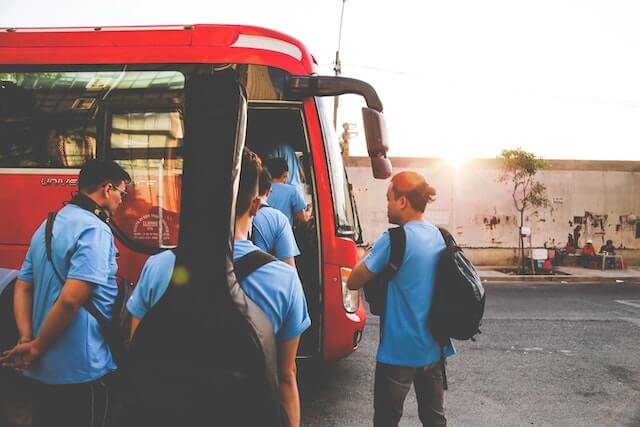
Europe in 14 Days: A Comprehensive Itinerary
Are you planning a trip to Europe but don't know where to start? Look no further! In this article, we'll provide you with a comprehensive itinerary for 14 days in Europe, including destination highlights, suggested activities, realistic time management, local cuisine, accommodation recommendations, transportation options, packing list, cost of living, language and cultural etiquette training, off-the-beaten-path experiences, and frequently asked questions. Let's get started!
🌍 Destination Highlights
Europe is a continent full of diverse cultures, languages, and landscapes. Here are some of the top highlights you can expect to see during your 14-day trip:
- Paris: The City of Lights, known for its iconic landmarks such as the Eiffel Tower, Notre-Dame Cathedral, and the Louvre Museum.
- Barcelona: A vibrant city on the Mediterranean coast, famous for its architecture, beaches, and nightlife.
- Rome: The Eternal City, home to ancient ruins such as the Colosseum and the Roman Forum, as well as the Vatican City.
- Amsterdam: A charming city of canals, bicycles, and tulips, with a rich history and culture.
- Vienna: The capital of Austria, known for its classical music, coffeehouses, and imperial palaces.
🗺️ Suggested Itinerary
To make the most of your 14 days in Europe, we suggest the following itinerary:
| Day | Morning | Afternoon | Evening |
|---|---|---|---|
| 1 | Visit the Eiffel Tower | Explore the Louvre Museum | See a cabaret show at Moulin Rouge |
| 2 | Take a walking tour of Montmartre | Visit the Palace of Versailles | Enjoy a French dinner at a local bistro |
| 3 | Explore the Gothic Quarter | Visit the Picasso Museum | Watch a flamenco show |
| 4 | Visit the Sagrada Familia | Stroll along the beach | Have tapas and sangria at a local bar |
| 5 | Visit the Colosseum and Roman Forum | Explore the Pantheon and Trevi Fountain | Have a gelato at a local gelateria |
| 6 | Visit the Vatican City and St. Peter's Basilica | Explore the Trastevere neighborhood | Have a pizza at a local trattoria |
| 7 | Take a canal cruise | Visit the Van Gogh Museum | Have a Dutch beer at a local pub |
| 8 | Visit the Anne Frank House | Explore the Jordaan neighborhood | Have a Dutch pancake at a local restaurant |
| 9 | Visit Schönbrunn Palace | Explore the Naschmarkt | Have a Wiener schnitzel at a local tavern |
| 10 | Visit the Hofburg Palace | Explore the Museum Quarter | Have a Viennese coffee at a local café |
| 11 | Take a day trip to Salzburg | Visit the Mirabell Palace and Gardens | Have a Mozartkugel at a local confectionery |
| 12 | Visit the Rijksmuseum | Explore the Red Light District | Have Indonesian rijsttafel at a local restaurant |
| 13 | Visit the Heineken Experience | Explore the Vondelpark | Have a Dutch gin at a local distillery |
| 14 | Visit the Anne Frank House | Explore the Jordaan neighborhood | Have a Dutch pancake at a local restaurant |
Note: This itinerary is just a suggestion. Feel free to customize it based on your interests and preferences.
⏰ Realistic Time Management
To make the most of your time in Europe, it's important to manage your time wisely. Here are some tips:
- Plan your itinerary in advance and prioritize the activities you want to do.
- Use public transportation to save time and avoid traffic.
- Take breaks and rest when needed to avoid burnout.
- Be flexible and open to changes in your itinerary.
🍴 Local Cuisine
Europe is known for its delicious cuisine, from French croissants to Italian pasta to Dutch cheese. Here are some local dishes you should try:
- Paris: Croissants, baguettes, escargots, steak frites, macarons.
- Barcelona: Paella, tapas, churros, cava, sangria.
- Rome: Pizza, pasta, gelato, espresso, tiramisu.
- Amsterdam: Stroopwafels, herring, bitterballen, Dutch cheese, jenever.
- Vienna: Wiener schnitzel, apfelstrudel, sachertorte, coffee, wine.
Here are some high-rated restaurants you can try:
- Budget: Hotel du Nord, Hotel de la Paix, Hotel de la Poste.
- Mid-range: Hotel Opera Cadet, Hotel Le Six, Hotel Le Mareuil.
- Luxury: Hotel Plaza Athenee, The Ritz Paris, Hotel de Crillon.
🚆 How To Get There And Away
Europe is well-connected by various modes of transportation, including:
- Air: Many major cities in Europe have international airports, such as Paris Charles de Gaulle, Barcelona El Prat, Rome Fiumicino, Amsterdam Schiphol, and Vienna International.
- Train: Europe has an extensive rail network, with high-speed trains such as the Eurostar, TGV, and Thalys connecting major cities.
- Bus: Buses are a cheaper alternative to trains, with companies such as Flixbus and Eurolines offering routes across Europe.
- Car: Renting a car is a good option if you want to explore rural areas or small towns.
🎒 Packing List
Here's a comprehensive packing list for your 14-day trip to Europe:
- Clothing: Comfortable walking shoes, lightweight jacket, raincoat, scarf, hat, sunglasses, swimsuit.
- Electronics: Camera, phone, charger, adapter, power bank.
- Documents: Passport, visa, travel insurance, itinerary, emergency contacts.
- Toiletries: Toothbrush, toothpaste, shampoo, conditioner, soap, sunscreen, insect repellent.
- Miscellaneous: Cash, credit card, backpack, water bottle, snacks.
💰 Cost of Living
The cost of living in Europe varies depending on the country and city you're visiting. On average, you can expect to spend around €70-€100 per day per person, including accommodation, food, transportation, and activities. However, this can vary greatly depending on your travel style and budget. Here are some tips for saving money:
- Use public transportation instead of taxis.
- Eat at local restaurants instead of touristy ones.
- Stay in budget-friendly accommodations such as hostels or Airbnb.
- Take advantage of free activities such as walking tours or museum visits.
🗣️ Language and Cultural Etiquette Training
Europe is a diverse continent with many different languages and cultures. Here are some tips for communicating effectively and avoiding cultural faux pas:
- Learn some basic phrases in the local language, such as "hello," "thank you," and "excuse me."
- Be aware of cultural differences in body language, gestures, and personal space.
- Dress appropriately for the local customs and weather.
- Respect local customs and traditions, such as tipping or removing your shoes in certain places.
🌟 Off-The-Beaten-Path Experiences
If you have some extra time during your trip, here are some off-the-beaten-path experiences you can try:
- Paris: Visit the Catacombs, take a day trip to Giverny to see Monet's gardens.
- Barcelona: Visit the Montserrat Monastery, take a day trip to the Costa Brava.
- Rome: Visit the Appian Way, take a day trip to Tivoli to see Hadrian's Villa.
- Amsterdam: Visit the Keukenhof Gardens, take a day trip to the Zaanse Schans windmills.
- Vienna: Visit the Hundertwasserhaus, take a day trip to Bratislava in Slovakia.
❓ Frequently Asked Questions
Q: What is the best time of year to visit Europe? A: The best time to visit Europe is during the shoulder seasons of spring (April-May) and fall (September-October), when the weather is mild and the crowds are smaller.
Q: Do I need a visa to visit Europe? A: It depends on your nationality and the country you're visiting. Check with the embassy or consulate of the country you're visiting for visa requirements.
Q: Is it safe to travel to Europe? A: Europe is generally a safe destination for travelers, but it's always important to take precautions such as being aware of your surroundings and avoiding high-crime areas.
🎉 Conclusion
Did you know that Europe is the second-smallest continent in the world, after Australia? Despite its small size, Europe is full of diverse cultures, languages, and landscapes, making it a popular destination for travelers from around the world. We hope this itinerary has inspired you to plan your own 14-day trip to Europe. Bon voyage!
🎥 For more inspiration, check out these videos:
- https://www.youtube.com/results?search_query=Europe+in+14+days
- https://www.youtube.com/results?search_query=[Paris](https://www.getyourguide.com/s/?q=Paris&partner_id=7Z2AQBB&utm_medium=online_publisher&cmp=itinerary_detail)+[Barcelona](https://www.getyourguide.com/s/?q=Barcelona&partner_id=7Z2AQBB&utm_medium=online_publisher&cmp=itinerary_detail)+[Rome](https://www.getyourguide.com/s/?q=Rome&partner_id=7Z2AQBB&utm_medium=online_publisher&cmp=itinerary_detail)+[Amsterdam](https://www.getyourguide.com/s/?q=Amsterdam&partner_id=7Z2AQBB&utm_medium=online_publisher&cmp=itinerary_detail)+[Vienna](https://www.getyourguide.com/s/?q=Vienna&partner_id=7Z2AQBB&utm_medium=online_publisher&cmp=itinerary_detail)
- https://www.youtube.com/results?search_query=European+food+tour



